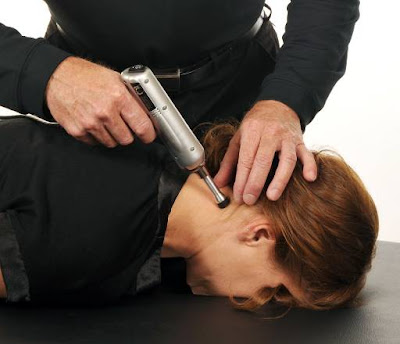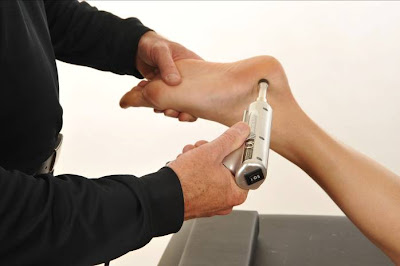My Life As a Chiropractor: A Reflection for the Future
 Thursday, October 21, 2010 at 10:30PM
Thursday, October 21, 2010 at 10:30PM 

Gerry Clum, DC
President-Life Chiropractic College West
I am a chiropractor. The only career I ever considered was to be a chiropractor. At the age of twelve, a chiropractor inspired me with his person and his skill. My goal as a chiropractor, however mercurial, was for someone to tell me that my hands felt on their neck like the hands of my first chiropractor felt on mine. Chiropractic made so much sense to me and delivered so much good in my life that it gives me chills to think about it.
I loved the simplicity, the elegance and the art of a master-adjustor. I reveled in the person who embodied a spirit of healing that magnified the clinical skill of their profession. I was humbled by the perspective that the chiropractor was the instrument of the healing and not the healer.
I remember standing on the edges of a group of "old-timers" (people who were then the age I am now!) as they related the story of the most recent miracle in their offices. Like kids who had been admitted to a secret club they shared a fellowship that was infectious. They shared the knowledge and the experience of the power of an adjustment and the unfettered joy of providing the "signature gesture" of their life as a chiropractor.
As an educator in chiropractic I dreamt of providing students with a glimpse of that power, joy and enthusiasm. Obviously there were many building blocks that needed to be put in place to get to this point but this was the pay-off!
My first chiropractic mentor, Dr. Cameron Cassan of Port Colborne, Ontario, Canada so embodied every aspect of being a chiropractor that I was immediately captured and mesmerized. My second mentor, Dr. Sid Williams, expanded that spirit of dedication and service through what he related was a Lasting Purpose-loving, serving and giving out of a sense of abundance. In my youth both of these men were bigger than life. In time I realized, even they, had weaknesses and faults like the rest of us! They have been powerful teachers, role models and reference points throughout my life from before my first shave to today!
Along the way I developed my fair share of the arrogance and hubris that effective clinicians seem to have. Even though it has been more than 35 years since I made my living over an adjusting table I still have the thought, deep in my heart, when I see someone who is ill or less healthy then they should be, that it would all be better if I could just get my hands on their neck or their low-back, etc. There is a subset of that arrogance that speaks to the idea that while they may be under chiropractic care, they have not been under my care! This perspective is one of the things that make chiropractic practice and care so special, so personal for both the patient and the provider. It would seem that surgeons would likely share this same kind of point-of-view. I, for one, want my chiropractor or surgeon to have that kind of deep-seated personal perspective on their capacity and skill.
Fortunately one of the lessons I learned from Dr. Williams was about a "heart-hand and a business-hand". In a strange contradiction one was not to know what the other was up to but each informed the other. The business-hand tempered the irrationality of the heart-hand and the heart-hand personalized and humanized the business-hand.
It is easy and tempting to look back in time and romanticize. I remember early December 1970 preparing for Dr. Strang's final exam in anatomy and leaning back in my chair and asking my roommate, Dick Broeg, to feel free to kick me in the ass if at some point down the road I say this was easy! Romanticizing has a tendency to sweeten the good times and to gloss over the tough times. I am not contemplating a return to the "good old days" before licensure, before an infrastructure to support the profession was developed. I am however suggesting that we need a return of that youthful spirit of enthusiasm for our profession, a return to the pride in delivering a life-changing adjustment so potent that the people on both sides of that vertebra knew something tremendous had just occurred.
Whatever you want to say about 1970 and 2010 two things can be said with complete confidence, the basic needs of people haven't changed while the vehicles for them to address those needs have changed greatly. The concepts, language and metaphors we use today may have their roots in earlier times but they must be expressed in a voice reflecting the moment. I didn't need scientific literature as I thought about my career choices. I was my own study with an n of 1 and a great result! "Evidence" was how I felt when I got off Dr. Cassan's adjusting table. In a day of databases, algorithms, computer-modeling and outcome measures we need to be prepared to fill our business-hand with the currency of the moment.
In the past forty years we have moved from a position of all that mattered was how Sally or Sam felt as they got off the adjusting table to all that matters is the predictability of a population-based randomized controlled clinical trial. The pendulum has traversed the full range of its arc and is preparing to come back to the mid-point. We are beginning to appreciate the idea that the population study cannot tell you anything about the circumstance of the individual and that the circumstance of an individual is not a predictor of the experience of the population.
In our search for data we have run from the way it used to be toward a new order. One of the questions we didn't ask is “was the way it used to be bad or was it incomplete?” We assume the new order of things is better and in fact is good, but do we also fail to ask is it complete?
Being excited about chiropractic (not irrational, excited) and being enthusiastic about chiropractic (not illogical, enthusiastic) have been characterized in recent times as less than professional. Being data constrained (not informed, constrained) and being evidence-driven (not guided, driven) have become the epitome of professionalism. One extreme represents the triumph of the heart-hand, the other the supremacy of the business-hand. Neither is adequate by itself.
Forty years down this path I am still working on the balancing act. While I don't deliver chiropractic care over an adjusting table it has become my circumstance to provide it over the conference table. The goal of that delivery is to respond with the input of Dr. Cassan or Dr. Williams and their ilk in one ear and the input of a Dr. Haldemann or Dr. Triano and their ilk in the other-an informed and humanistic approach to the discipline.
My thanks to the American Journal of Clinical Chiropractic and in particular to Deed Harrison, D.C. for the opportunity to briefly reflect on the past forty years. My thanks and heartfelt gratitude to the men and women who have helped enliven these years, whether through support or challenge. My apologies to anyone along the way I have failed to listen to, appreciate, acknowledge or respect.
I can hardly wait for the next forty to unfold!
 CBP Seminars | Comments Off |
CBP Seminars | Comments Off | 



















![clip_image002[5] clip_image002[5]](http://lh5.ggpht.com/_TwOomLHsIQE/TDf53bLweOI/AAAAAAAABt8/mJ9o2KNLp3o/clip_image002%5B5%5D%5B4%5D.jpg?imgmax=800)



![clip_image002[7] clip_image002[7]](http://lh4.ggpht.com/_TwOomLHsIQE/TDhmA9-kp_I/AAAAAAAABuU/f-NooHi2ATQ/clip_image002%5B7%5D%5B5%5D.jpg?imgmax=800)

